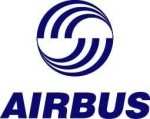Tue, Nov 17, 2009
Air New Zealand Will Purchase First Aircraft With New
Winglets
 Airbus has launched its new "Sharklet" large wingtip devices,
which it says are designed to enhance the eco-efficiency and
payload-range performance of the A320 Family. Sharklets, which are
offered as a forward-fit option, are expected to result in at least
3.5 percent reduced fuel burn over longer routes, accounting for an
annual CO2 reduction of around 700 tons per aircraft. Airbus said
Sunday that the A320 will be the first model fitted with Sharklets,
which will be delivered around the end of 2012, to be followed by
the other A320 Family models from 2013. Air New Zealand is the
launch customer for the Sharklets which are specified for its
future A320 fleet.
Airbus has launched its new "Sharklet" large wingtip devices,
which it says are designed to enhance the eco-efficiency and
payload-range performance of the A320 Family. Sharklets, which are
offered as a forward-fit option, are expected to result in at least
3.5 percent reduced fuel burn over longer routes, accounting for an
annual CO2 reduction of around 700 tons per aircraft. Airbus said
Sunday that the A320 will be the first model fitted with Sharklets,
which will be delivered around the end of 2012, to be followed by
the other A320 Family models from 2013. Air New Zealand is the
launch customer for the Sharklets which are specified for its
future A320 fleet.
"Air New Zealand recently decided to move to an all A320 fleet
for narrow-body operations on domestic and short-haul international
routes," said Air New Zealand Chief Executive Officer, Rob Fyfe.
"The new Sharklets will enable our Airbus fleet to benefit from
lower fuel burn and carbon emissions, both across Air New Zealand's
domestic network and especially on the longer trans-Tasman
sectors."
Airbus Chief Operating Officer - Customers, John Leahy said
"Sharklets are not just part of Airbus' response to addressing
environmental issues and rising fuel costs, but they also enhance
aircraft overall performance."
 Airbus claims that the 3.5 percent efficiency improvement with
Sharklets will be in addition to the already positive effect of the
A320 classic wingtip fence. Payload-range benefits include either a
revenue payload increase of around 1,100 lbs or an additional 100nm
range at the original payload. The Sharklet installation also keeps
the A320 Family within the ICAO 'Class C' (wingspan less than 118
feet) and will result in higher available takeoff weights, notably
from obstacle-limited runways. Moreover, where runway performance
is not 'limiting', operators should profit from a reduction in
average takeoff thrust (with consequent savings in engine
maintenance costs by around two percent), while communities will
also appreciate even lower takeoff noise. Other benefits are the
enhanced climb performance and higher initial cruise altitude.
Airbus claims that the 3.5 percent efficiency improvement with
Sharklets will be in addition to the already positive effect of the
A320 classic wingtip fence. Payload-range benefits include either a
revenue payload increase of around 1,100 lbs or an additional 100nm
range at the original payload. The Sharklet installation also keeps
the A320 Family within the ICAO 'Class C' (wingspan less than 118
feet) and will result in higher available takeoff weights, notably
from obstacle-limited runways. Moreover, where runway performance
is not 'limiting', operators should profit from a reduction in
average takeoff thrust (with consequent savings in engine
maintenance costs by around two percent), while communities will
also appreciate even lower takeoff noise. Other benefits are the
enhanced climb performance and higher initial cruise altitude.
This latest development has been part of the larger continuous
improvement program for the A320 Family which is supported by an
annual investment in excess of $150 million each year. To this end,
Airbus has conducted a thorough campaign over several years to
evaluate improved large aerodynamic devices - not only using
Airbus' company-owned A320 test aircraft, but also with its
advanced computational-fluid-dynamics (CFD) simulation-tools.
More News
Airbus Racer Demonstrator Makes Inaugural Flight Airbus Helicopters' ambitious Racer demonstrator has achieved its inaugural flight as part of the Clean Sky 2 initiative, a corners>[...]
A little Bit Quieter, Said Testers, But in the End it's Still a DA40 Diamond Aircraft recently completed a little pilot project with Lufthansa Aviation Training, putting a pair of >[...]
Line Up And Wait (LUAW) Used by ATC to inform a pilot to taxi onto the departure runway to line up and wait. It is not authorization for takeoff. It is used when takeoff clearance >[...]
Contributing To The Accident Was The Pilot’s Use Of Methamphetamine... Analysis: The pilot departed on a local flight to perform low-altitude maneuvers in a nearby desert val>[...]
From 2015 (YouTube Version): Overcoming Obstacles To Achieve Their Dreams… At EAA AirVenture 2015, FedEx arrived with one of their Airbus freight-hauling aircraft and placed>[...]
 Airbus Racer Helicopter Demonstrator First Flight Part of Clean Sky 2 Initiative
Airbus Racer Helicopter Demonstrator First Flight Part of Clean Sky 2 Initiative Diamond's Electric DA40 Finds Fans at Dübendorf
Diamond's Electric DA40 Finds Fans at Dübendorf ANN's Daily Aero-Term (04.23.24): Line Up And Wait (LUAW)
ANN's Daily Aero-Term (04.23.24): Line Up And Wait (LUAW) NTSB Final Report: Extra Flugzeugbau GMBH EA300/L
NTSB Final Report: Extra Flugzeugbau GMBH EA300/L Classic Aero-TV: 'Never Give Up' - Advice From Two of FedEx's Female Captains
Classic Aero-TV: 'Never Give Up' - Advice From Two of FedEx's Female Captains




